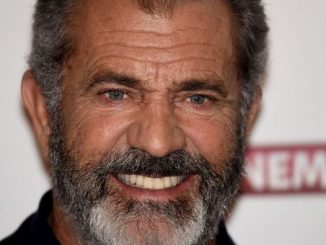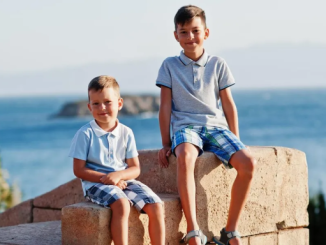
Sonia Todd of Moscow, Idaho, died of cancer at the young age of 38. But knowing the end was near, she decided to write her own obituary before passing away. As she explained, obituaries were usually written a couple of different ways that she simply didn’t care for. So, as one of her last acts on this earth, she put pen to paper and decided for herself how her obituary would read.
The result of Sonia confronting her own mortality as she penned her obituary was a piece full of humor as well as wisdom, appearing in the Moscow-Pullman Daily News. The words were so honest and inspirational that long after her death, they will still ring true, giving others something to aspire to. Ironically, Sonia wrote, “I never really accomplished anything of note.” How wrong she was. The truth expressed in the obituary she wrote proved to be quite an accomplishment in and of itself.
“Other than giving birth to my two wonderful, lovable, witty and amazing sons (James and Jason), marrying my gracious, understanding and precious husband (Brian), and accepting the Lord Jesus Christ as my personal savior – I have done very little. None of which requires obit space that I have to shell out money for,” Sonia Todd began, explaining why she was writing her obituary and why it wouldn’t be like others.
Adding that she didn’t want a bunch of her loved ones sitting around to write a glowing report of her, which she says would be “filled with fish tales, half-truths, impossible scenarios, and out-right-honest-to-goodness-lies,” Sonia explained she simply didn’t like putting people in those kinds of situations. With the explanation out of the way, she got to her version of the truth about her own life.
“I just tried to do the best I could. Sometimes I succeeded, most of the time I failed, but I tried. For all of my crazy comments, jokes and complaints, I really did love people. The only thing that separates me from anyone else is the type of sin each of us participated in. I didn’t always do the right thing or say the right thing and when you come to the end of your life those are the things you really regret, the small simple things that hurt other people,” Sonia admitted.
Although she said that she mostly enjoyed life, she also said it wasn’t perfect and that she encountered many bumps in the road, especially in her teens and early 20s. Even though some parts of her life were harder than others, Sonia said, “I learned something from every bad situation and I couldn’t do any more than that.” She also claimed there were benefits to dying young. Jokingly, she wrote, “I still owe on my student loans and the jokes on them cuz I’m not paying them. Plus, I am no longer afraid of serial killers, telemarketers or the IRS.”Addressing the fact that some people have told her that writing her own obituary is morbid, Sonia Todd continued, “I think it is great because I get a chance to say thank you to all the people who helped me along the way. Those who loved me, assisted me, cared for me, laughed with me and taught me things so that I could have a wonderful, happy life. I was blessed beyond measure by knowing all of you. That is what made my life worthwhile.”
It was the conclusion of her obituary that was the most important, however. Sonia encouraged others to change their lives. “If you think of me, and would like to do something in honor of my memory do this: Volunteer at a school, church or library. Write a letter to someone and tell them how they have had a positive effect on your life. If you smoke – quit. If you drink and drive – stop,” she wrote.
Her advise continued, “Turn off the electronics and take a kid out for ice cream and talk to them about their hopes and dreams. Forgive someone who doesn’t deserve it. Stop at all lemonade-stands run by kids and brag about their product. Make someone smile today if it is in your power to do so.”
Today seems like a good day to honor Sonia’s memory by completing some of these simple requests and reminding others to do the same. Luckily for us, we still have time for these things. And, thankfully, with her dying wish, Sonia Todd left us these words of wisdom that few realize until it’s too late
Secret of happy married life..

I asked my friend, “What is the secret behind your Happy Married Life?”
He said “You should share responsi- bilities with due love and respect each other. Then absolutely there will be no problems.”
I asked “Can you explain?”
He said “In my house, I take decisions on bigger issues where as my Wife decides on smaller issues.
We do not interfere in each other’s decisions.”
Still not convinced, i asked him “Give me some examples”
He said “Smaller issues like, which car we should buy, how much amount to save, when to visit the super market, when & where to go on vacation, which sofa, air conditioner, refrigerator to buy. Monthly expenses, whether to keep a maid or not etc. Are all decided by my wife. I just agree to it “
I asked “Then, what is your role?”
He said “My decisions are only for very big issues. , whether Britain should lift sanctions over Zimbabwe, whether Bodoland should be formed or not, whether Ronaldo should retire from Football, etc etc. and do you know,



Leave a Reply